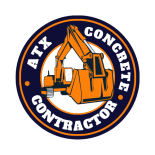Introduction
Concrete is a durable and versatile material commonly used in driveways, patios, and sidewalks. To ensure its longevity and protect it from damage caused by weather and wear, it’s essential to seal the concrete regularly. However, sealing concrete at the wrong time of year can lead to subpar results and potential damage. In this article, we will explore the best time of year to seal concrete in the US, taking into account weather conditions, temperature range, and other factors.
Table of Contents
- Understanding the Importance of Sealing Concrete
- Best Time of Year to Seal Concrete
- Weather Conditions for Sealing Concrete
- Temperature Range for Sealing Concrete
- Key Takeaways
- FAQs
- Conclusion
Understanding the Importance of Sealing Concrete
Sealing concrete is a crucial step in maintaining its appearance and structural integrity. By applying a high-quality sealer, you can protect the concrete from moisture, oil stains, UV damage, and freeze-thaw cycles. It also helps to prevent cracks, spalling, and discoloration, extending the lifespan of your concrete surfaces.
Best Time of Year to Seal Concrete
The best time of year to seal concrete in the US is during the late spring or early fall. These seasons typically offer the ideal weather conditions and temperature range for the sealer to cure properly. Avoid sealing concrete during extreme temperatures, such as the peak of summer or the freezing winter months, as it can affect the sealer’s performance.
Weather Conditions for Sealing Concrete
It’s essential to consider the weather conditions when planning to seal your concrete. Here are some factors to keep in mind:
- Avoid sealing concrete during rainy or humid conditions, as moisture can interfere with the sealer’s bonding process.
- Choose a day with clear skies and low humidity to ensure optimal drying and curing of the sealer.
- Check the weather forecast and avoid sealing if rain is expected within 24 to 48 hours, as it can wash away the sealer before it fully cures.
By selecting a day with favorable weather conditions, you can enhance the effectiveness of the sealer and achieve long-lasting protection for your concrete surfaces.
Temperature Range for Sealing Concrete
The temperature range plays a crucial role in the sealer’s curing process. Here are some guidelines to follow:
- Avoid sealing concrete when the temperature exceeds 90°F (32°C), as it can cause the sealer to dry too quickly and potentially trap air bubbles or lead to improper adhesion.
- Avoid sealing concrete when the temperature drops below 50°F (10°C), as it can hinder the curing process, resulting in a weaker bond and reduced protection.
- Choose a day with temperatures between 70°F to 80°F (21°C to 27°C) for optimal curing and maximum effectiveness of the sealer.
By sealing your concrete within the recommended temperature range, you can ensure that the sealer bonds properly and provides the desired level of protection.
Key Takeaways
To summarize, here are the key takeaways regarding the best time to seal concrete:
- Sealing concrete is crucial for maintaining its appearance and durability.
- The late spring or early fall is the best time of year to seal concrete in the US.
- Avoid sealing concrete during extreme temperatures, such as the peak of summer or freezing winter months.
- Choose a day with clear skies, low humidity, and no rain in the forecast.
- Seal concrete when the temperature ranges between 70°F to 80°F (21°C to 27°C) for optimal curing.
FAQs
Q: Can I seal concrete during winter?
A: It’s generally not recommended to seal concrete during the winter months, especially in areas with freezing temperatures. The cold weather can affect the sealer’s curing process and compromise its effectiveness.
Q: Can I seal concrete during summer?
A: While it’s possible to seal concrete during the summer, it’s important to avoid sealing on extremely hot days. High temperatures can cause the sealer to dry too quickly and potentially lead to adhesion issues.
Conclusion
Sealing concrete is a vital step in protecting your surfaces and ensuring their longevity. By choosing the best time of year to seal concrete and considering factors such as weather conditions and temperature range, you can achieve optimal results. Remember to follow the guidelines mentioned in this article to enhance the effectiveness of the sealer and enjoy long-lasting protection for your concrete surfaces.
